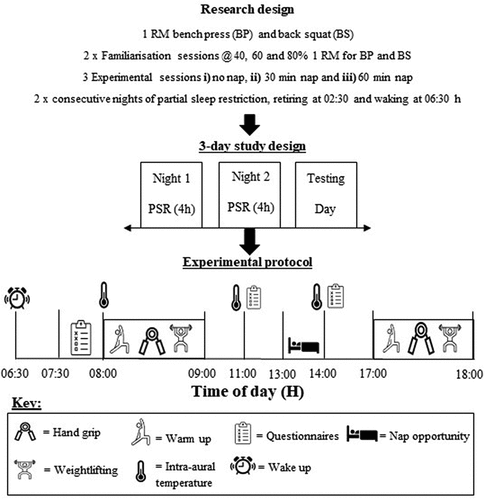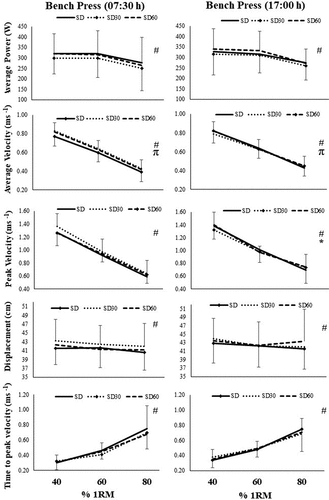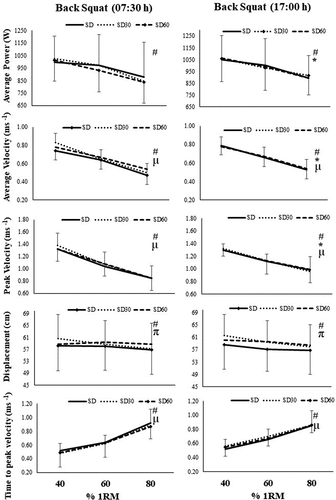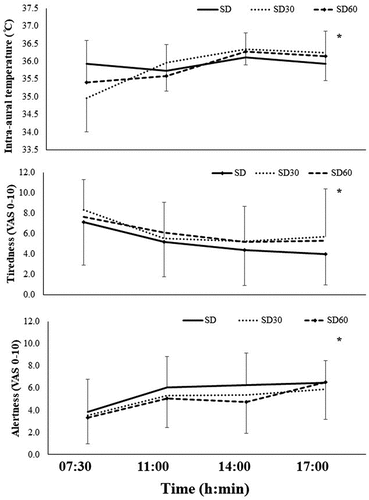Figures & data
Figure 1. Schematic of experimental protocol. Participants followed the same procedures for each condition, with the addition of a 30 or 60-minute nap at 13:00 h in the PSR30 and PSR60 conditions. At 07:30 and 17:00 h participants entered the laboratory and undertook the performance measures.

Figure 2. Mean ± SD values of each performance variable for morning (07:30 h) and evening (17:00 h) bench press at 40%, 60% and 80% 1RM loads for the three experimental conditions. # denotes main effect for load, as shown by Bonferroni pairwise comparisons (P < 0.05), * denotes main effect for time of day as shown by Bonferroni pairwise comparisons (P < 0.05) and π denotes condition and time of day interaction.

Figure 3. Mean ± SD values of each performance variable for morning (07:30 h) and evening (17:00 h) back squat at 40%, 60% and 80% 1RM loads for the three experimental conditions. # denotes main effect for load, as shown by Bonferroni pairwise comparisons (P < 0.05), * main effect for time of day as shown by Bonferroni pairwise comparisons (P < 0.05) , π denotes condition and time of day interaction, µ denotes time of day and load interaction denotes.

Table 1. F values and P values for all performance variables measured in this study (“average power,” “average velocity,” “displacement,” “peak velocity,” “time to peak velocity”), rating of perceived exertion (RPE) for both bench press and back squat and perceived effort using the VAS (visual analog scale) for grip strength. bold indicates significant (P < 0.05); italic indicates a trend (0.1 < p > 0.05).
Table 2. Mean ± SD, F values and P values for all physiological and psychological variables measured in the study (temperature, tiredness, alertness, Profile of mood states (POMS), word and colour interference test). Bold values indicate significant figures; italic indicates a trend (0.1 < P > 0.05).
Figure 4. Mean ± SD values for intra-aural temperature, subjective alertness and tiredness recorded at 07:30, 11:00, 14:00 and 17:00 h for the three experimental conditions (PSR0, PSR30, PSR60). * denotes main effect for time of day as shown by Bonferroni pairwise comparisons (P < 0.05).

Table 3. Mean ± SD, F values and P values for all actimetry and Waterhouse questionnaire variables measured in the study. Bold values indicate significant figures; italic indicates a trend (0.1 < P > 0.05).
